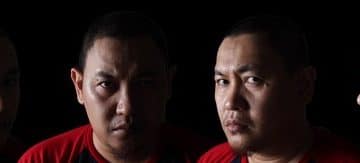Korean Drama Plot Twists: Insider Strategies to Predict the Unpredictable

Navigating the suspenseful world of Korean dramas involves understanding common plot devices and character archetypes; by analyzing these storytelling patterns, viewers can anticipate twists and turns before they happen.
Korean dramas are known for their captivating storylines and unexpected turns. Ever wondered how to anticipate those shocking moments? Dive into strategies for predicting Korean drama plot twists and become a true K-drama insider.
Decoding Korean Drama Plot Twists: An Introduction
Korean dramas, or K-dramas, are famous for their intricate plots and unexpected twists. Understanding these twists can be a fun way to deepen your appreciation for the genre. But how can you anticipate what’s coming next?
This article explores strategies to help you predict plot twists in Korean dramas. We’ll delve into common tropes, character archetypes, and narrative patterns that screenwriters often employ. Gear up to become a true K-drama insider.

Common Tropes and Narrative Patterns
One of the first steps in predicting plot twists is familiarizing yourself with common tropes. These are the predictable elements frequently used in storytelling. Spotting these clichés can hint at what’s about to happen.
Recognizing these patterns doesn’t make the dramas less enjoyable; instead, it enhances your ability to appreciate the storytelling techniques used.
The Amnesia Arc
Amnesia is a classic trope in K-dramas. Characters suddenly forget significant events or relationships, leading to emotional turmoil and complex storylines.
The Love Triangle
Love triangles are frequent. The female lead is torn between two attractive male leads, each with distinct qualities. This often results in intense competition and heartbreak.
- Sudden Illness: A character, particularly the lead romantic interest, unexpectedly gets a life-threatening disease or condition.
- Family Secrets: Hidden adoptions, concealed parentage, or long-lost family members cause significant disruption in the characters’ lives.
- Contract Relationships: A couple enters into a romantic relationship based on a contract or mutual agreement, often leading to real feelings.
Many romantic K-dramas use contract relationships as a means of exploring relationships outside of traditional formats, such as a contract marriage or dating situation.
Analyzing Character Archetypes
Character archetypes are recurring character types with predictable behaviors and roles. Identifying these archetypes can provide clues about their actions and how they might influence the plot.
Archetypes also have limitations, and these can subvert viewer expectations. Keep an eye out for how a character both fulfills and defies their archetype.

The Chaebol
The *chaebol*, a wealthy heir or business tycoon, is a staple. They are often arrogant but have a hidden soft side. Their decisions always carry significant weight.
The Innocent Heroine
This character is usually kind, optimistic, and faces adversity with unwavering spirit. Her innocence often makes her a target but also a source of strength.
- The Second Lead: This character is often romantically interested in the protagonist but doomed to unrequited love.
- The Villain: Commonly motivated by greed, revenge, or jealousy, the villain consistently creates problems for the protagonist.
- The Wise Mentor: An older character who provides guidance and perspective, often revealing crucial information at strategic moments.
The villain creates conflict and can be a catalyst for character development. The mentor might act as a guide, helping the protagonists navigate their journeys while often revealing secrets from the past.
Paying Attention to Foreshadowing
Foreshadowing involves hints or clues that suggest future events. Skilled writers use foreshadowing to build suspense and provide subtle indications of what’s to come.
Foreshadowing is an excellent guide for anticipating twists because it lays the groundwork for surprises. The more you notice these hints, the better you’ll become at predicting upcoming events.
Symbolic Objects
Objects can carry symbolic weight, representing future events or character traits. For instance, a broken mirror might foreshadow a fractured relationship.
Recurring Themes
Themes that consistently reappear can emphasize important issues or predict future struggles. A theme of forgiveness, for example, might foreshadow a significant reconciliation.
- Dialogue Hints: Watch for throwaway lines or seemingly insignificant comments that later become relevant.
- Dream Sequences: Dreams can provide symbolic insights into a character’s fears, desires, or future events.
- Sudden Changes in Mood: An abrupt shift in tone during a scene may indicate that something unexpected is about to happen.
Keep an eye out for these indicators, and you’ll be better prepared to identify potential plot developments early on.
Understanding Cultural Nuances
Korean dramas are deeply rooted in Korean culture, and understanding these cultural nuances is essential for predicting plot twists. Cultural values, societal norms, and historical context can heavily affect the narrative.
A thorough understanding of Korean culture can enrich your viewing experience and enable you to anticipate twists rooted in these cultural elements.
Filial Piety
Respect for elders and family is a crucial theme. Decisions are often influenced by the desire to honor parents, which can lead to plot twists related to family obligations.
The Concept of “Han”
*Han* is a complex emotion involving resentment and sorrow. It often drives characters’ actions and may lead to revenge plots or unexpected sacrifices.
- Social Hierarchy: Understand the influence of social class and position on relationships and decisions.
- Confucianism: Appreciate how Confucian principles shape character behavior and ethical dilemmas.
- Superstitions and Beliefs: Recognize how traditional beliefs and superstitions might influence character decisions and plot developments.
Korean dramas often weave moral and situational conflicts. Appreciating these cultural influences provides a much deeper level of understanding and predictive ability.
Analyzing Screenwriter and Director Patterns
Different screenwriters and directors have unique styles and recurring themes. Familiarizing yourself with their past works can provide insights into their storytelling tendencies and potential plot strategies.
By studying their previous works, you can make educated guesses about their preferred narrative techniques and the types of twists they favor.
Common Themes
Identify if the director or writer often explores specific themes such as revenge, redemption, or social justice. This suggests similar themes may appear in their new dramas.
Stylistic Choices
Pay attention to the director’s signature visual style, such as the use of slow-motion, flashbacks, or particular color palettes. These can offer clues about the mood and emotional direction of the scene.
- Recurring Actors: Learn if certain actors frequently appear in their projects. This might indicate a preference for particular performance styles.
- Plot Devices: Note if they tend to use specific plot devices, such as mistaken identities or secret pasts.
- Narrative Structures: Study if they favor particular narrative structures, like non-linear storylines or ensemble casts.
Understanding their patterns is like having inside information. You’ll recognize signals that others might miss.
Considering Production Context and External Factors
External factors, such as audience feedback, censorship, and production budget, can also influence plot twists. Keeping these elements in mind can prepare you for unexpected turns in the story.
Understanding these elements can help you anticipate how external pressures might shape the storyline.
Audience Reception
Dramatic shifts or unexpected character arcs can occur if audience reactions prompt screenwriters to change the story’s direction.
Censorship Regulations
Content restrictions can prevent certain themes or storylines from being explored. This can result in creative workarounds that lead to unique plot twists.
- Budget Constraints: Limited resources may affect the scope and scale of the drama, leading to creative solutions to keep viewers engaged.
- Political Climate: Social issues influence story directions and the narrative’s handling of sensitive subject matter.
- Global Trends: Current trends in popular culture also affect the drama, which can result in plot twists that reflect contemporary tastes.
Keeping these external factors in mind empowers you to see beyond the surface of the plot!
| Key Point | Brief Description |
|---|---|
| 🧐 Common Tropes | Familiarizing with clichés like amnesia can hint at upcoming plot developments. |
| 🎭 Character Archetypes | Knowing common character roles like the ‘chaebol’ can help anticipate their actions. |
| 🔮 Foreshadowing | Noticing subtle hints or clues can give insights into future events. |
| 🎎 Cultural Nuances | Understanding Korean cultural values is critical for predicting culturally-driven twists. |
Frequently Asked Questions
▼
Common tropes include amnesia arcs, love triangles, sudden illnesses, and hidden family secrets. Spotting these clichés can provide clues about the direction of the plot.
▼
Understanding Korean culture is highly important to predict plot twists. Values like filial piety and emotions like “Han” often drive character decisions and storyline reveals.
▼
Absolutely, as screenwriters and directors often have unique styles and recurring themes. Familiarity with their past works provides insights into their storytelling tendencies.
▼
Foreshadowing involves hints or clues that suggest future events. It’s an excellent technique to build suspense and provide subtle indications of what’s to come in the story.
▼
Yes, factors such as audience feedback, censorship, budget constraints affect the storyline. Awareness can help in anticipating unexpected turns in the story.
Conclusion
Understanding the art of predicting plot twists in Korean dramas can significantly elevate your viewing experience. By paying attention to common tropes, cultural nuances, and production contexts, you’ll become a savvy K-drama enthusiast who can anticipate those climactic moments.


![Unveiling the Layers of [Drama Name]: A Comprehensive Review Unveiling the Layers of [Drama Name]: A Comprehensive Review - Cover Image](https://oramacast.com/wp-content/uploads/2025/07/oramacast.com_5_1752083833_cffa9fe7_cover-360x180.jpg)


